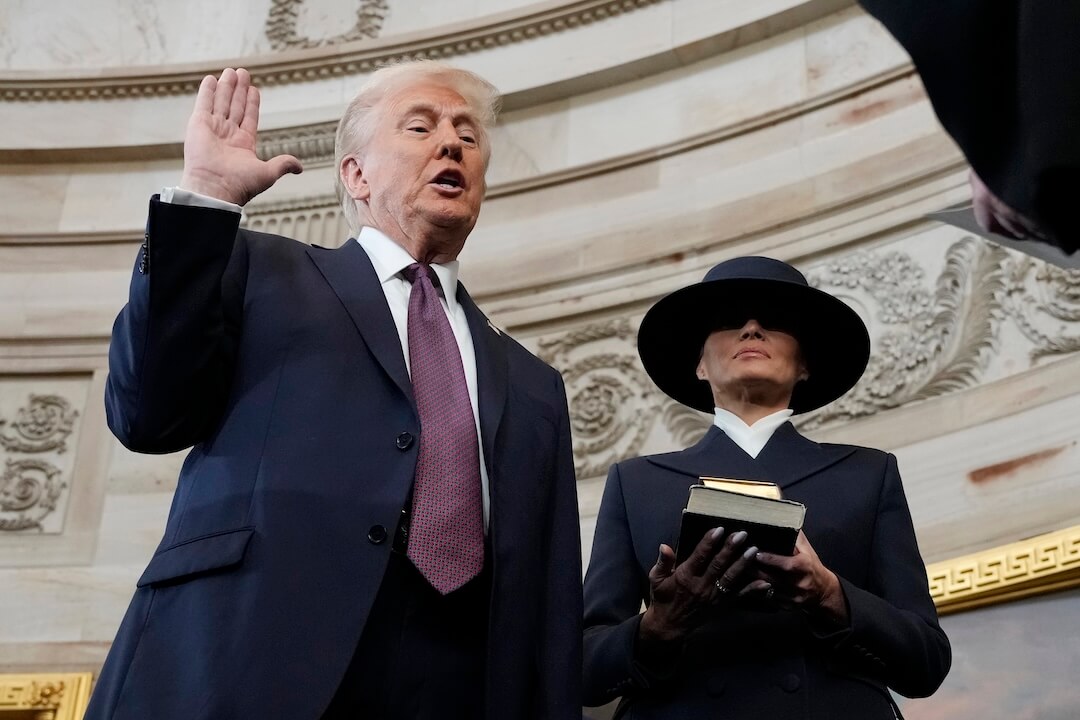I recently came across a 1997 American Journalism Review story that discussed “the newest communication tool” for journalists: email interviews.
In the years since, stories highlighting email interviews have often placed journalists into two camps: those who think they’re acceptable and those who don’t. But as I’ve learned from my own interviewing methods and from talking with other journalists, the issue’s not that black and white.
With so many tools at their disposal, journalists are taking a blended approach to interviews, one that involves in-person conversations, phone calls, email exchanges, Skype calls, instant messages, text messages and more. The key is figuring out which approach works best for you and the story you’re working on.
For more insight, I talked with five journalists about their preferred interviewing methods and what they’ve learned from experimenting with different forms of communication. Partly out of curiosity, I asked them how they wanted to be interviewed. About half chose to answer questions by phone; the other half chose email.
Lane DeGregory, Tampa Bay Times
 As a narrative writer, Lane DeGregory always tries to meet with sources in person.
As a narrative writer, Lane DeGregory always tries to meet with sources in person.
“In their home, preferably, in the kitchen or living room or bedroom if possible,” she said via email. “If not, I’ll settle for talking on the front porch, riding in their car, interviewing while they walk their dog or grocery shop or pick their kid up in the carline, or, worst case, in their office. More sterile. But still says a lot about them.”
Seeing sources in person enables her to witness details that she wouldn’t be able to get via phone or email. A few years ago, while interviewing a local city manager who had a sex change, she asked about two shelves of identical red journals in his home office.
“He had been keeping a personal diary for 30 years, writing every night; on one side of the book he was Steve, on the other Susan — there it was, a life history of his hiding being transgendered,” DeGregory said. “I would never have dreamed to ask him whether something like that even existed.”
She’s learned that some sources naturally do better with in-person interviews.
“Teenage boys, especially, won’t talk on the phone,” said DeGregory, the mother of two sons. “But stand behind them while they play Black Ops and you can ask them anything.”
When she can’t talk with sources in person, DeGregory opts for Skype interviews so she can see their body language and expressions. Email, she said, can be useful for setting up interviews, asking preliminary questions and fact-checking information.
While following three girls from drug court, DeGregory kept up with them via text and Facebook messages. “They were in and out of awful homes and jail and halfway houses,” she said, “but they almost always had access to a phone or Facebook, or their friends did, so I could check in on them and know when things were happening — even when they relapsed, sometimes.”
Joanna Smith, Toronto Star
Joanna Smith, a reporter in the Ottawa bureau of the Toronto Star, prefers to do in-person interviews but has found that phone interviews sometimes work better.
 When she attends media briefings, she’s able to get general comments from politicians. But there are often other reporters fighting for their attention, which makes it hard to ask for specifics.
When she attends media briefings, she’s able to get general comments from politicians. But there are often other reporters fighting for their attention, which makes it hard to ask for specifics.
“If I am working on something that requires more in-depth questions — or if it is an exclusive or an enterprise story — then I prefer to get the politician on the phone so that I can be one-on-one rather than one in a group,” Smith said.
She’s found that email interviews give sources who don’t want to talk to her an easy escape: “When it comes to actually trying to get information from someone who doesn’t want to give information — and that happens a lot in political reporting — I don’t think they’re ideal.”
Smith said that when she’s reporting on civil servants, some of her sources use email to control the interviewing process. When she requests phone interviews, she typically hears from spokespeople who say: “We’ll see what we can do.” It’s rare, she said, that her requests lead to a phone call.
“[The spokespeople] will ask me to send a list of questions because they want to find the appropriate person to respond and, in the interest of time and efficiency, I will give them a clearer idea of what I want to know,” Smith said by phone. “But they end up just listing a bunch of answers to questions I never asked and will email me five minutes before my deadline. There’s no opportunity for follow-ups whatsoever.”
Other reporters have had similar experiences. WFAA-TV Investigative Producer Jason Trahan argued earlier this year that “email interviews aren’t really interviews.” The best interviews, he said, “are those that include banter and asides which lead to more questions and ultimately better information imparted.”
Steve Fox, University of Massachusetts
Steve Fox, a full-time lecturer and multimedia journalism coordinator at the University of Massachusetts at Amherst, has been arguing for years that email interviews should be “a last resort.”
 Most of his students, he said, use them as a first resort.
Most of his students, he said, use them as a first resort.
“It’s a safer way of communicating; you say stuff via text and via email that you wouldn’t necessarily say face to face,” Fox said by phone. “It’s a lot more difficult to ask hard questions while looking somebody in the eye. But every good journalist has to go through that.”
In a piece he wrote a few years ago, Fox said many journalists are “too lazy to go interview someone in person or on the phone.” He requires his students to do in-person interviews and encourages them to set up interviews by phone.
Many of Fox’s students still end up sending interview requests via email, only to wait days for a response.
“They will wait back to hear back from emails they send out rather than picking up the phone or walking by the professor’s office,” he said. “I say, ‘Well, get up there and go to their office and knock on the door. They may say no, but at least you’ll get in front of them.’”
Jaweed Kaleem, The Huffington Post
Jaweed Kaleem, a religion reporter for The Huffington Post, relies on a variety of interviewing methods.
 He said he’s in the “last resort camp” when it comes to email interviews, “but that does not mean ‘never.’”
He said he’s in the “last resort camp” when it comes to email interviews, “but that does not mean ‘never.’”
Kaleem has found them helpful when trying to understand complicated theological practices. “It is helpful for someone to lay out the Mormon concept of the Godhead in an email that I can reference, for example,” he said via email.
He tends not to use email interviews if he wants to capture a source’s voice. “Some people tend to make their answers very formal when they are interviewed via email,” he said. “I’d prefer informal conversation if it’s more representative of how the person I’m speaking with typically talks.”
Kaleem, who’s based in New York City, has been doing a series of local features that give him an opportunity to interview people in person. He does phone interviews for quick dailies and when interviewing sources who aren’t nearby.
On a few occasions, he’s used social media and instant message to set up interviews and to ask sources preliminary questions. When covering the Quran burning in Florida, for instance, he reached out to Orlando-area Muslim friends and sources on his Facebook and Google Chat lists. Facebook’s chat function, he said, was an easy and quick way to get information about what was happening.
Another time, he posted a story to Facebook about Protestant groups divesting from Israel. Someone who saw the post and was involved in the effort quickly messaged him.
“We went back and forth about some complex details in the story,” Kaleem said. “My use of social media in both cases still led to phone or in-person conversations.”
Cindy Carcamo, Orange County Register
Cindy Carcamo, who covers immigration for The Orange County Register, said she sees value in taking a blended approach to interviewing.
 At times, talking with sources in person has led to opportunities she wouldn’t have otherwise gotten. While at a detention center in Mesa, Ariz., she convinced an Immigration and Customs Enforcement detainee to allow her to join him on his flight to Guatemala City and then to the village where he was from. The piece she ended up writing chronicled the deportee’s return to Guatemala and was nominated for a Livingston Award last year.
At times, talking with sources in person has led to opportunities she wouldn’t have otherwise gotten. While at a detention center in Mesa, Ariz., she convinced an Immigration and Customs Enforcement detainee to allow her to join him on his flight to Guatemala City and then to the village where he was from. The piece she ended up writing chronicled the deportee’s return to Guatemala and was nominated for a Livingston Award last year.
“I think it’s really important to be there in person, especially because immigration is such a heated, emotional topic,” said said by phone. “You pick up on a lot of nuance, a lot of details that you wouldn’t otherwise get.”
Carcamo also relies on email and phone interviews, though not as often. “When you’re on deadline and you need to get a quick quote from someone to get the story up, I don’t think email’s a bad approach,” she said. “I think some people respond quicker via email than they ever would on the phone.”
If she’s interviewing a Spanish-speaking person, she opts for the phone. “I grew up speaking Spanish at home,” she said, “but I’m not good at writing it.” A few times, she’s done quick interviews via text message.
Remembering how her sources like to be interviewed, she said, has helped her to be more efficient.
“I think it’s important to talk to the source and see what their preferred method of communication is, especially for breaking news,” Carcamo said. “You might make note of that, so when something happens, you can know whether to call or email or text the person.”
Do you take a blended approach to interviews? Tell us about it in the comments section.








Comments